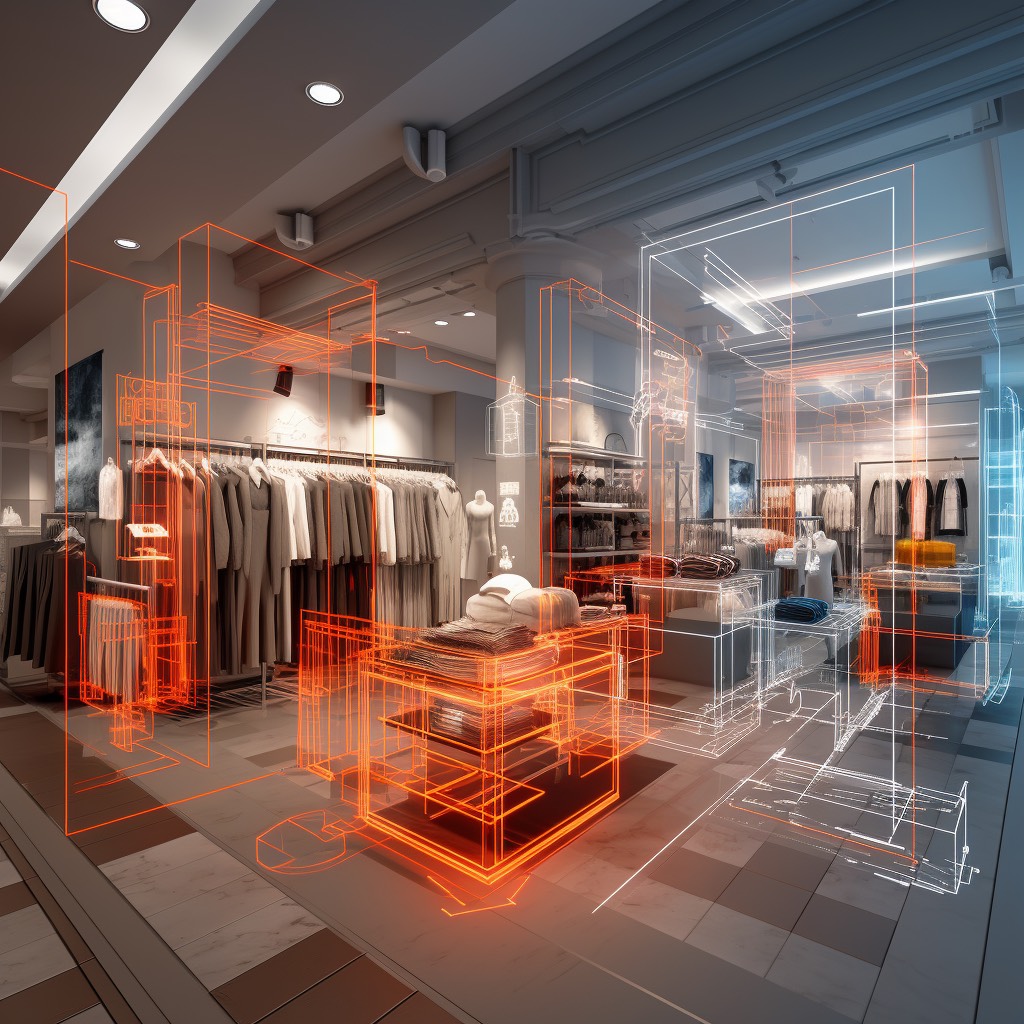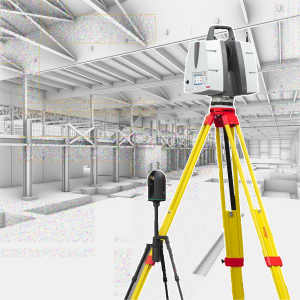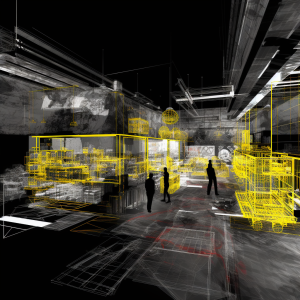Revolutionizing Construction Technology with Robotic Imaging (Now Available on IOS and Android)
Robotic Imaging's application is changing the way architects, engineers, construction teams, owners and developers exchange data. Integrating with existing technology is their focus and how these growing trends continue to grow in unison with the 3D data economy.

Philadelphia, PA, May 10, 2024 --(PR.com)-- Robotic Imaging: The Retail Construction Revolution
It’s hard to believe, but the year of 2024 is well underway, and retail construction technology continues to evolve in revolutionary ways. As cutting-edge sensor technology becomes more practical, site standardization is becoming the norm and it is completely changing the way business is conducted. The number of trades that are implementing these advancements continues to rise and now includes Architects, Engineers, Construction Teams, Developers, Owners, and Retail Corporations. It’s the hope of Robotic Imaging in the new year, that the retail brand market as a whole will begin to see the power of these tools that so many other industries are already utilizing. The following components illustrate why retail brands should begin to look towards this technology, and more importantly, why they should look towards Robotic Imaging for all of their reality capture needs.
Advantages of Reality Capture at Robotic Imaging
Enhanced Precision and Accuracy: The first step to any construction project is making sure the foundational data is correct. Robotic Imaging is harnessing the power of reality capture (also called scan-to-BIM) technology to quickly produce an accurate digital twin of the construction environments. This precision is produced in the field by a LiDAR 3D laser scanner, which has a one to three (cm) accuracy rate. With an ability to be on-site within 72 hours of a signed proposal, Robotic Imaging allows New Store and Existing Store teams to start their development quickly and accurately, providing clients 2D drawings and 3D Revit or Sketchup models. These models can include MEP items such as ducts, pipes, sprinkler systems and their sub-components, ensuring that as-built conditions are based on current and real data, rather than assumptions.
Efficient Space Optimization: Space maximization is crucial for retail brands looking to increase revenue while offering a seamless shopping experience. Reality capture technology such as Matterport and Iguide used at Robotic Imaging enables retailers to identify areas for improvement. By digitizing buildings, stakeholders can visualize store layouts in a virtual environment (VR/AR), allowing for remote experimentation with different floor plans and product placements. This data-driven approach provides insights into how spaces can be optimized. A Photo Plan is an additional key component to understanding the space a retailer is looking to change, a component that is not often offered by these technologies, but one that Robotic Imaging can produce. Receiving a detailed, clickable PDF form that can show close-up photos of panels and RTUs or spaces that the technology was not able to capture is pivotal for retail brands in order to avoid an unnecessary site visit or extra digging for information.
Streamlined Construction Processes: Traditional construction and remodeling projects often face delays and cost overruns due to inadequate documentation and miscommunication. Change orders that are ordered incorrectly based on the incorrect site data given has been plaguing the construction industry since its existence. Reality capture technology along with Robotic Imaging’s platform are the tools that should be most commonly used to eliminate guesswork. By digitally integrating as-built conditions into BIM models and accurate CAD files, stakeholders can identify and address potential design-build clashes or conflicts early in the design phase. Consequently, Scan-to-BIM enables supply chains to streamline construction processes, delivering projects on time and within budget. Furthermore, the Robotic Imaging platform gives way for retail brands to keep all deliverables in one place, check the progression of a project, and access photo reports with utility information. The end goal of the platform will allow clients to create and monitor a project request entirely from start to finish, eliminating the number of opportunities for miscommunication and inaccurate information to be given.
Enhanced Facility Management: The benefits that come along with this technology, the platform, and Robotic Imaging’s newly implemented mobile app will extend far beyond the construction phase. Once a retail store is operational, reality models integrated with real-time data enable efficient facility management. Having organized documentation that store managers can access on the go with the mobile app such as equipment locations, utility systems, and maintenance schedules, store managers can proactively plan and streamline store operations. Utilities have always been the key component to opening or enhancing a site and having this information on hand and readily available will lead to cutting-edge building automation systems and workflows for a more sustainable future. Additionally, the mobile app will be an extremely useful tool for creating and monitoring the progression of projects quickly and easily right from your mobile device.
Financial Implications: All of the components listed above that are produced by reality capture technology and Robotic Imaging’s technology will result in the reduction of construction errors, rework, and maintenance costs, which will then result in huge savings. It will also help keep designers at their desks, focused on project execution. Ultimately, sending one person to a site with sensors that can turn a multi-day visit into a 3 hour visit will turn into a huge financial win for big companies who are trying to produce hundreds of new sites in short amounts of time.
Competitive Advantage
In an increasingly competitive retail landscape, staying ahead requires innovative approaches to maintaining existing profit centers and launching new stores. By adopting remote sensing technology, retailers gain a competitive edge by streamlining store design, construction, and facility design. Building construction teams are finding Robotic Imaging’s digital strategy to be the premier reality capture workflow to speed up development across all markets. Robotic Imaging’s ability to give clients a quick turnaround time, to produce accurate data through laser scanning, and the endless benefits that clients will receive from the platform and mobile app are what make this company stand out compared to competitors and are what should convince retail brands to begin using Reality Capture technology in the new year.
Leveraging reality capture is the surefire way to enhance precision, optimize space and streamline construction processes. This new year presents an opportune time for companies of all sizes to embrace this paradigm shift.
It’s hard to believe, but the year of 2024 is well underway, and retail construction technology continues to evolve in revolutionary ways. As cutting-edge sensor technology becomes more practical, site standardization is becoming the norm and it is completely changing the way business is conducted. The number of trades that are implementing these advancements continues to rise and now includes Architects, Engineers, Construction Teams, Developers, Owners, and Retail Corporations. It’s the hope of Robotic Imaging in the new year, that the retail brand market as a whole will begin to see the power of these tools that so many other industries are already utilizing. The following components illustrate why retail brands should begin to look towards this technology, and more importantly, why they should look towards Robotic Imaging for all of their reality capture needs.
Advantages of Reality Capture at Robotic Imaging
Enhanced Precision and Accuracy: The first step to any construction project is making sure the foundational data is correct. Robotic Imaging is harnessing the power of reality capture (also called scan-to-BIM) technology to quickly produce an accurate digital twin of the construction environments. This precision is produced in the field by a LiDAR 3D laser scanner, which has a one to three (cm) accuracy rate. With an ability to be on-site within 72 hours of a signed proposal, Robotic Imaging allows New Store and Existing Store teams to start their development quickly and accurately, providing clients 2D drawings and 3D Revit or Sketchup models. These models can include MEP items such as ducts, pipes, sprinkler systems and their sub-components, ensuring that as-built conditions are based on current and real data, rather than assumptions.
Efficient Space Optimization: Space maximization is crucial for retail brands looking to increase revenue while offering a seamless shopping experience. Reality capture technology such as Matterport and Iguide used at Robotic Imaging enables retailers to identify areas for improvement. By digitizing buildings, stakeholders can visualize store layouts in a virtual environment (VR/AR), allowing for remote experimentation with different floor plans and product placements. This data-driven approach provides insights into how spaces can be optimized. A Photo Plan is an additional key component to understanding the space a retailer is looking to change, a component that is not often offered by these technologies, but one that Robotic Imaging can produce. Receiving a detailed, clickable PDF form that can show close-up photos of panels and RTUs or spaces that the technology was not able to capture is pivotal for retail brands in order to avoid an unnecessary site visit or extra digging for information.
Streamlined Construction Processes: Traditional construction and remodeling projects often face delays and cost overruns due to inadequate documentation and miscommunication. Change orders that are ordered incorrectly based on the incorrect site data given has been plaguing the construction industry since its existence. Reality capture technology along with Robotic Imaging’s platform are the tools that should be most commonly used to eliminate guesswork. By digitally integrating as-built conditions into BIM models and accurate CAD files, stakeholders can identify and address potential design-build clashes or conflicts early in the design phase. Consequently, Scan-to-BIM enables supply chains to streamline construction processes, delivering projects on time and within budget. Furthermore, the Robotic Imaging platform gives way for retail brands to keep all deliverables in one place, check the progression of a project, and access photo reports with utility information. The end goal of the platform will allow clients to create and monitor a project request entirely from start to finish, eliminating the number of opportunities for miscommunication and inaccurate information to be given.
Enhanced Facility Management: The benefits that come along with this technology, the platform, and Robotic Imaging’s newly implemented mobile app will extend far beyond the construction phase. Once a retail store is operational, reality models integrated with real-time data enable efficient facility management. Having organized documentation that store managers can access on the go with the mobile app such as equipment locations, utility systems, and maintenance schedules, store managers can proactively plan and streamline store operations. Utilities have always been the key component to opening or enhancing a site and having this information on hand and readily available will lead to cutting-edge building automation systems and workflows for a more sustainable future. Additionally, the mobile app will be an extremely useful tool for creating and monitoring the progression of projects quickly and easily right from your mobile device.
Financial Implications: All of the components listed above that are produced by reality capture technology and Robotic Imaging’s technology will result in the reduction of construction errors, rework, and maintenance costs, which will then result in huge savings. It will also help keep designers at their desks, focused on project execution. Ultimately, sending one person to a site with sensors that can turn a multi-day visit into a 3 hour visit will turn into a huge financial win for big companies who are trying to produce hundreds of new sites in short amounts of time.
Competitive Advantage
In an increasingly competitive retail landscape, staying ahead requires innovative approaches to maintaining existing profit centers and launching new stores. By adopting remote sensing technology, retailers gain a competitive edge by streamlining store design, construction, and facility design. Building construction teams are finding Robotic Imaging’s digital strategy to be the premier reality capture workflow to speed up development across all markets. Robotic Imaging’s ability to give clients a quick turnaround time, to produce accurate data through laser scanning, and the endless benefits that clients will receive from the platform and mobile app are what make this company stand out compared to competitors and are what should convince retail brands to begin using Reality Capture technology in the new year.
Leveraging reality capture is the surefire way to enhance precision, optimize space and streamline construction processes. This new year presents an opportune time for companies of all sizes to embrace this paradigm shift.
Contact
Robotic Imaging
Will Buzan, COO
484-639-7777
roboticimaging.com
Will Buzan, COO
484-639-7777
roboticimaging.com
Multimedia

3D Laser Scanners Paving the Way to Digital Construction
These stationary laser scanners are paving the way to supplemental documentation in the AEC space.

Layout Optimization
Databases are being prepared for design routing and coordination.
Categories
